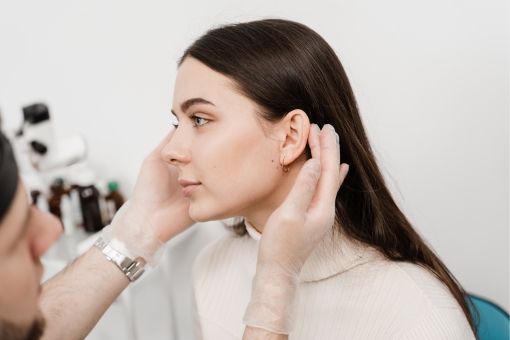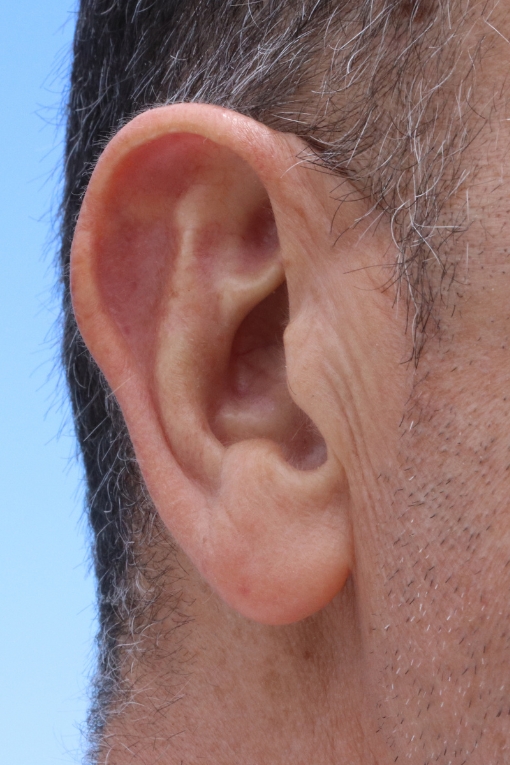Expert Cosmetics Since 2017
Choice of Five-Star Clinics
Friendly and Knowledgeable Team
Otoplasty
Why choose otoplasty surgery?
People often choose otoplasty to correct issues such as misshapen ears or ear lobes, protruding ears, small or constricted ears, and ears with missing cartilage, which are often congenital conditions. Besides congenital conditions, otoplasty is also performed on individuals who have sustained ear injuries or trauma during accidents or other traumatic events, like dog bites or sports-related injuries. For instance, boxers, wrestlers, and mixed martial artists often suffer from a common ear injury known as cauliflower ear, and in such cases, otoplasty might be recommended.


How does otoplasty surgery work?
The procedure is usually performed on an outpatient basis, implying that patients can return home the same day. It begins with the administration of anesthesia to ensure the patient’s comfort throughout the surgery. The specific surgical steps are contingent on the type of otoplasty being performed, but generally include making an incision (usually on the back of the ear or in the folds of the ear), adding or removing tissue, reshaping the ear, and closing the incision with stitches. The duration of the surgery ranges between one to three hours, depending on the individual’s specific situation.
What are the results like?
Following the surgery, a dressing is placed over the ears, which needs to be kept clean and dry. Patients are advised to avoid touching their ears, choose clothes that don’t require pulling over the head, and sleep on their back to prevent resting or putting pressure on the ears. The benefits of otoplasty are notable and include the correction of prominent, protruding or misshapen ears, increased self-confidence, and permanent results. Some common side effects post-surgery may encompass soreness, itchiness, redness, swelling, bruising, and tingling or numbness.
The satisfaction rate for otoplasty is impressively high, with a reported 96% satisfaction rate among participants.
How does otoplasty surgery work?
The procedure is usually performed on an outpatient basis, implying that patients can return home the same day. It begins with the administration of anesthesia to ensure the patient’s comfort throughout the surgery. The specific surgical steps are contingent on the type of otoplasty being performed, but generally include making an incision (usually on the back of the ear or in the folds of the ear), adding or removing tissue, reshaping the ear, and closing the incision with stitches. The duration of the surgery ranges between one to three hours, depending on the individual’s specific situation.
What are the results like?
Following the surgery, a dressing is placed over the ears, which needs to be kept clean and dry. Patients are advised to avoid touching their ears, choose clothes that don’t require pulling over the head, and sleep on their back to prevent resting or putting pressure on the ears. The benefits of otoplasty are notable and include the correction of prominent, protruding or misshapen ears, increased self-confidence, and permanent results. Some common side effects post-surgery may encompass soreness, itchiness, redness, swelling, bruising, and tingling or numbness.
The satisfaction rate for otoplasty is impressively high, with a reported 96% satisfaction rate among participants.

Speak to an expert today
Give us a call or fill in our easy to use online form and a member of our customer support team will be in touch with you at a time and date that works best for you.
Frequently Asked Questions
Does otoplasty last forever?
How long will ears hurt for after otoplasty surgery?
When can I sleep normally after otoplasty?
How do I shower after ear surgery?
After undergoing ear surgery (and while the ear is healing), it’s important to follow some set rules to ensure it is kept clean and dry.
- ALWAYS make sure to keep the inside of the ear dry, if water gets in then dab it with a dry towel but don’t put anything into the ear itself (things like a Q-tip or earbud)
- You can shower or bathe 48 hours after surgery, but don’t soak or scrub the wound at all
- You can try to block the ears a little by placing a cotton wool ball coated with Vaseline into the outer bowl of the ear (don’t place anything into the ear canal itself)
- Dry the incisions immediately after bathing/showering and apply moisturising lotion or ointment (if prescribed) over the incisions until they are fully healed.
What is the difference between otoplasty and pinnaplasty surgery?
Can I wear earrings or pierce my ears after surgery?
After the ears are healed there is nothing stopping you from either wearing earrings or having your ears pierced. This includes both the lobe and any cartilage based piercings.
Will otoplasty surgery affect my hearing?
Or call our team to arrange your consultation today:
- 0800 772 0039
View our latest news
The Fascinating Evolution of Cosmetic Surgery: A Journey Through Time
When we think of cosmetic surgery today, the images that often come to mind are those of celebrities with perfectly chiseled features or individuals undergoing transformative procedures for a rejuvenated appearance. However, the art and science of altering the human...
Stay connected

